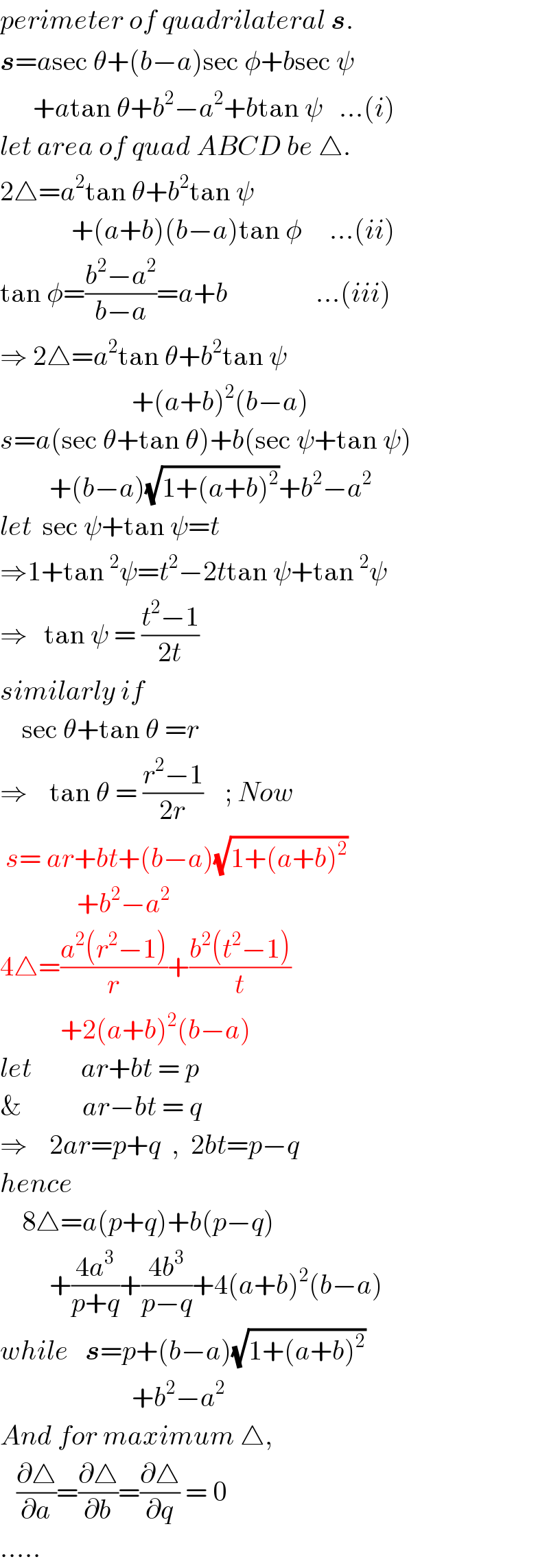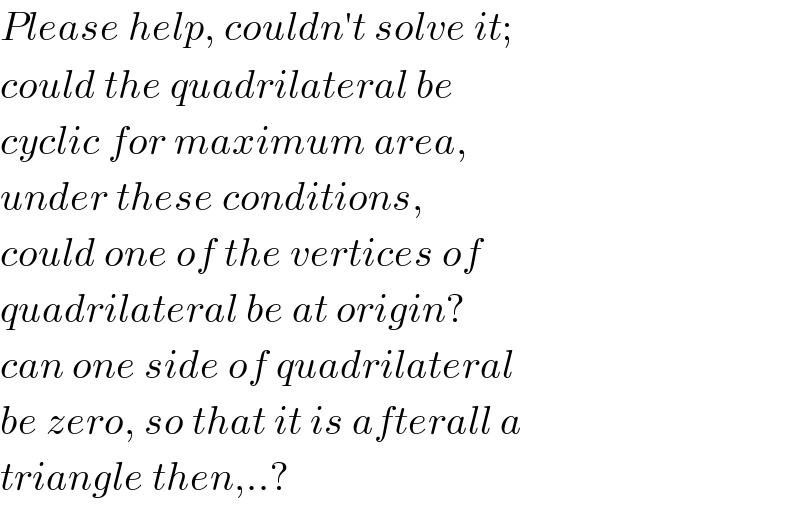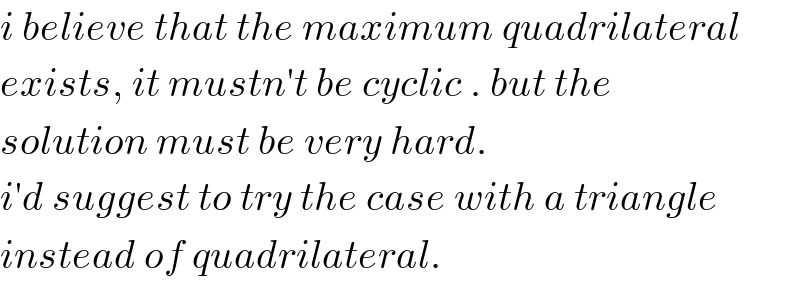
Question and Answers Forum
Question Number 62970 by ajfour last updated on 27/Jun/19

Commented by ajfour last updated on 28/Jun/19

Answered by ajfour last updated on 27/Jun/19

Commented by ajfour last updated on 27/Jun/19

Commented by ajfour last updated on 28/Jun/19

Commented by mr W last updated on 28/Jun/19

